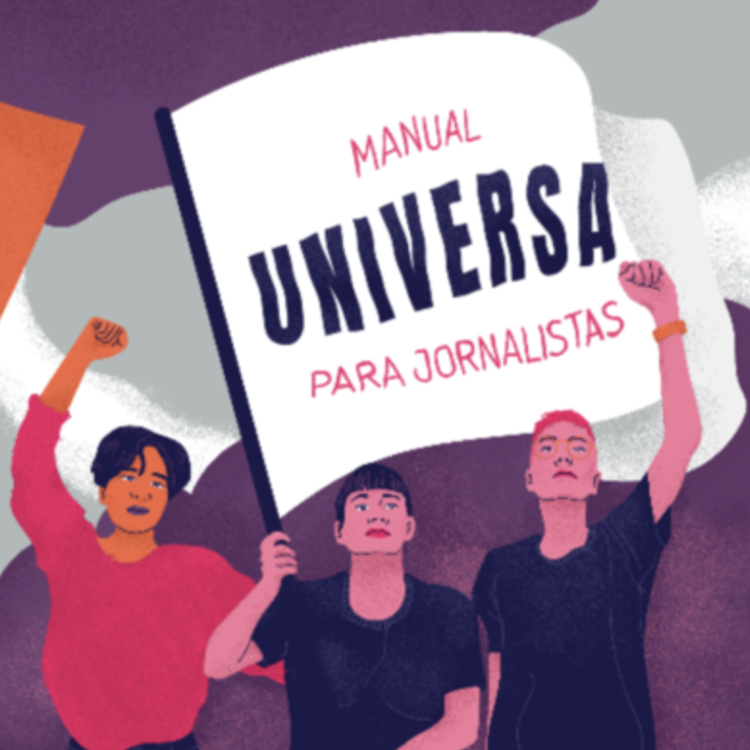How must journalists approach family members of a victim of femicide? Which photos are the best to illustrate stories on sexual harassment? How to prevent a woman from suffering during an interview?
Assuming that these questions affect all journalists when dealing with victims and family members of these tragic situations, UOL’s women platform Universa created a toolkit called Universa Manual for Journalists: Best Practices in Reporting on Violence Against Women.
UOL is the largest Brazilian group of content, technology, services and means of digital payments. It launched Universa in 2018. The toolkit is open to be used by journalists of other news organisations and can be downloaded for free.
A huge problem in Brazil
 According to a survey by the United Nations High Commissioner for Human Rights (OHCHR), Brazil occupies 5th place in countries with more violent deaths of women.
According to a survey by the United Nations High Commissioner for Human Rights (OHCHR), Brazil occupies 5th place in countries with more violent deaths of women.
Since the Maria da Penha Law’s creation in 2006, which increased sentences for abusers, established special domestic violence courts and required the authorities to open 24-hour shelters for abused women, domestic violence gained more attention from the press.
The document gathers a series of best practices for covering gender crimes, including the initial conversation with the victims and the best words and appropriate expressions used in the stories.
It also provides information on legislation, where and how to report violence, and a list of various sources that specialise in violence against women.

“Our main objective is that the stories of women like Tatiane Spitzner, Sandra Gomide, Yasmin Costa dos Santos and those of other victims of femicide that will unfortunately happen are told with empathy and fairly.
The aim is that while investigating and writing about these and other crimes against women, journalists pay attention to the sexist stereotypes that appear even in the speech of renowned jurists, transforming victims of violence into defendants”, explains Dolores Orosco, chief editor of Universa.

Orosco says that as Universa employs a 100% female team, the channel is highly concerned with ethical, sensitive and responsible standards to contribute to the fight against domestic violence effectively.
“The toolkit comprises information on best practices collected from a wide array of interviews with experts and reporters who work the field. The objective is that this guide is helpful not only for UOL journalists but also for journalism students and civic organisations interested in transforming society”, says Orosco.
Universa reminds us that investigation of such cases is complicated and causes painful trauma to the victims, being essential to understand the subject in deep and take some precautions when approaching the victims and writing about the violence they suffered.

“Often, journalists need to be aware of their own sexist, socially rooted beliefs – hence the importance of understanding some subtleties. It is part of the journalist’s responsibility not to reinforce harmful stereotypes, to the benefit not only of the interviewees but of women in general”.
She reminds that blaming the victim, even if indirectly – for example, by describing the clothes she was wearing when experiencing sexual violence – reinforces the idea that the responsibility for the crime she suffered is hers when it is not.
According to Dolores Orosco, another recurring way to blame a victim of domestic violence is to question why she spent so much time being beaten without reporting it.
“There are still cases in which the story tries to justify the aggressor’s actions, stating that he committed violence motivated by jealousy or because he was “hot-headed”.
Humanising the victims

The toolkit offers suggestions on making the first contact with a woman victim of violence and what information to avoid when writing. It highlights the importance of humanising the stories and not turning the person into just one more number. It explains all the complex Brazilian legislation related to violence against women.
It also features recommendations such as listening to the other side – the perpetrator or the State – responsible when a woman suffers aggression. The publication compiles a wide range of information on the different types of violence against women and related figures.
There are sensible recommendations, such as respecting the victim’s desires, avoiding unnecessary detail descriptions, and a police-like writing style.
It highlights the importance of avoid uncritical coverage and how a bad story can worsen the situation.
Universa Manual for Journalists: Good Practices in Covering Violence Against Women can be downloaded for free.













